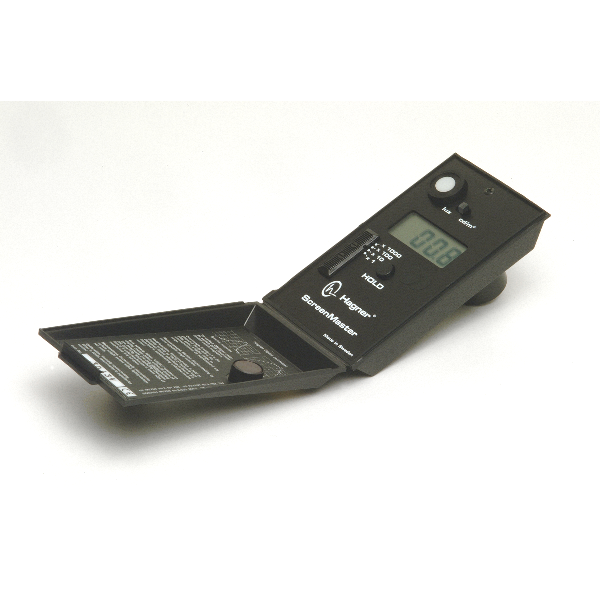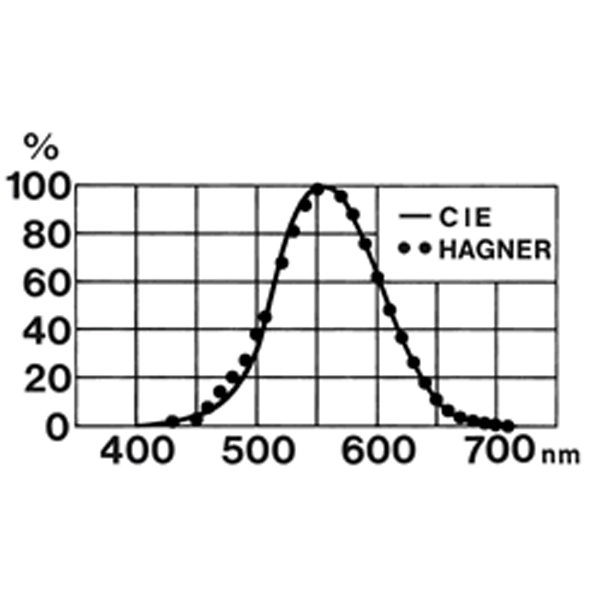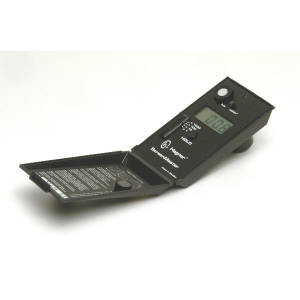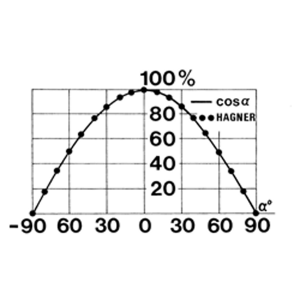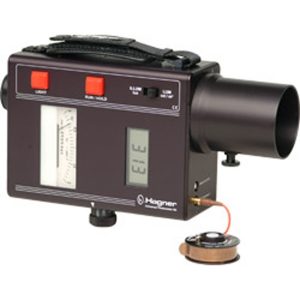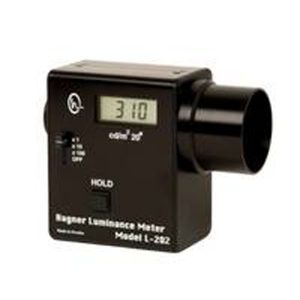HAGNER SCREENMASTER
The Hagner ScreenMaster is a small, handy and very easy-to-use instrument for measurement of
luminance as well as illuminance over a range of 0.1-200,000 cd/m² and lux, respectively. With both
automatic zeroing and on/off switch, the only controls needed are a four-position range selection
switch, a hold button for retaining the displayed value and a switch for selection between luminance
and illuminance.
The ScreenMaster is provided with two detectors, which both are carefully filtered to give a spectral
response close to that of the human eye, as defined in CIE standards.
The detector on the front side of the instrument is well cosine corrected and used for measurement
of illuminance, for instance on computer screens and in working areas.
The detector on the underneath side of the instrument is built into a tube and is used for
measurement of luminance. The opening of the tube (= 1 cm 2 ) gives a measuring angle of 36 o . (The
measured area = the base of a cone with a 36 o top angle.) This implies that the instrument is well
suited for e.g. determination of luminance and contrasts on computer screens, background
luminance and luminance from negative viewing tables. (To avoid reflectance of ambient light the
detector tube can be pressed against the light emitting surface when measuring on screens and
tables.) By means of this detector it is furthermore possible to calculate transmission factors and film
density.
The Hagner ScreenMaster is of course also most suitable for general evaluations of lighting quality.
Specification
Detector : Silicon photodiods, Vλ-filtered and (illuminance detector)cosine corrected.
Measuring Range : 0.1-200,000 cd/m² and lux respectively
Accuracy : Better than +/- 3% (+/- 1 in last digit)
Power Supply : 9 volt battery type PP3 alkaline (lifetime approx. 300 hrs)
Dimensions : 135 x 75 x 60 mm
Weight : 215g
Part No
1) Hagner ScreenMaster Combination meter
Operation
To open the lid, press the forward part lightly downward with your thumb and at the same time pull
the latch upwards with the first two fingers of the same hand. The instrument comes on when the
cover is opened and turns off when it is closed. Set the luminance/illuminance switch in desired
position. Move the range switch to the range which will give the greatest accuracy and read the
display. When the HOLD button is pressed the measured value will show on the display until the
button is released.
Calibration
The instrument is carefully calibrated when delivered. As the light sensitive silicon diodes are
extremely stable over long periods of time recalibration every two-three years should, under normal
use of the instrument, be sufficient. If however there is any reason to believe that the instrument is
out of calibration, it can be returned to your stockist or the manufacturer for earlier control checks.
The instrument is carefully calibrated when delivered. As the light sensitive silicon diodes are
extremely stable over long periods of time recalibration every two-three years should, under normal
use of the instrument, be sufficient. If however there is any reason to believe that the instrument is
out of calibration, it can be returned to your stockist or the manufacturer for earlier control checks.
Power Source
The power source is a standard 9 Volt battery. To avoid battery leakage only alkaline batteries
should be used. When LOBAT appears on the display, it is time to replace the battery. However, the
instrument can be used for approximately 5 hours longer before replacing the battery is essential.
To change the battery remove the screw at the front edge of the cover plate, which permits the
plate to be removed. When replacing it the lower edge of the plate must fit under the two bosses at
the lower edge of the case before it can be closed again. Note! When lowering the plate make sure
that the pin of the four-position switch fits into the sliding control on the plate.
Maintenance
The white plastic disc over the illuminance detector may be cleaned when necessary with a light
damp cloth. The luminance detector is protected by a glass disc inside the tube. The disc can be
cleaned with, for instance, a light damp &”tops”;.

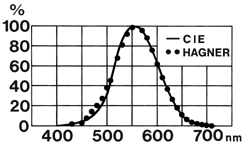
The spectral sensitivity of the Hagner ScreenMaster closely relates to the visibility curve of the CIE
standard observer.
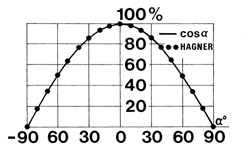
The cosine correction of the illuminance detector compensates for measuring errors owing to
oblique incident light.
Hagner ScreenMaster datasheet


